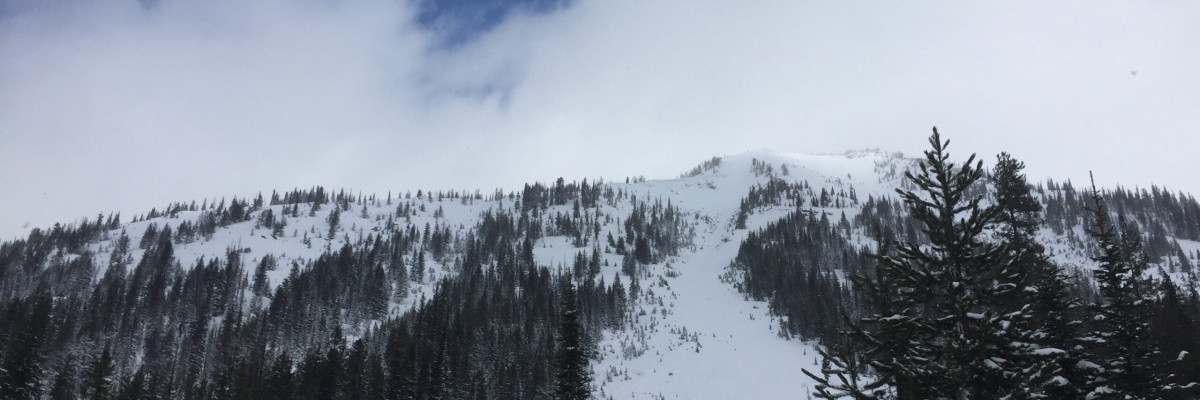The current avalanche danger is moderate in the west central Montana backcountry. Human triggered avalanches are possible. Heightened avalanche conditions exist on specific terrain features. Evaluate snow and terrain carefully and identify features of concern.
Good morning, this is Travis Craft with the West Central Montana Avalanche Center’s avalanche advisory for February 01, 2018. This danger rating does not apply to operating ski areas, expires at midnight tonight and is the sole responsibility of the U.S. Forest Service.
Weather and Snowpack
Mountain temperatures range from 11 F to 24 F in the region. In the Bitterroot winds are 8 mph with gusts of 10 mph out of the South. In the northern part of the advisory area, winds are reading 4 mph with gusts of 8 mph out of the SW. The forecast area received 4 to 16 inches of new snow in the last 48 hours.
Logan and I went to Twin Lakes in the central Bitterroot yesterday. We found 14 new inches of light, low-density snow. We saw cornice development from the last week of winds and, saw wind loaded slopes near ridge tops and some terrain was cross-loaded. Our weak layers did not propagate in stability tests. Overall the snowpack is strengthening.
The primary avalanche problem is wind slabs. Look for rounded pillows of snow near ridgelines and on cross-loaded slopes. Recognize signs of instability such as cracking in the surface snow. There have been reports of skier triggered wind slabs that were between 1 to 2 feet deep on cross-loaded slopes. Avoid wind loaded slopes.
The second avalanche problem is loose dry releases. The new snow is light, low-density and did not form a cohesive slab. Look for large sluffs to be triggered easily today. These should not be a problem to manage unless they knock you off your machine or down and carry you into a terrain trap.
The final avalanche concern is persistent slabs. Our buried surface hoar on shadier aspects and crusts on more sun exposed slopes, still need a pit dug to see if they are reactive. Before committing to a steep slope, dig a pit 3 feet down and identify any layers of concern, and see if they are reactive in stability tests.
Overall our snowpack is strengthening. There are weak layers in our snowpack; they are becoming less reactive with time. Identify wind loaded terrain and avoid it.
Avalanche and Weather Outlook
We are entering a warm up with potential to see rain fall on a dry snowpack. See the forecast here. With the addition of rain and warmer temperatures expect the avalanche danger to increase quickly.
I will issue the next advisory on Saturday,February 03, 2018
Ski and ride safe.














